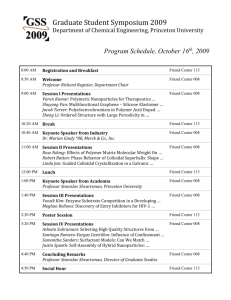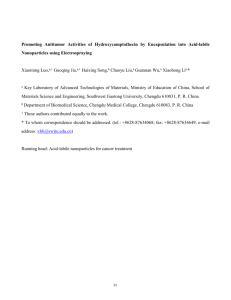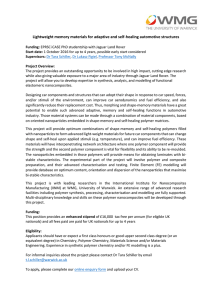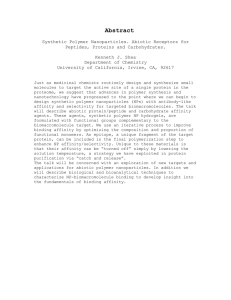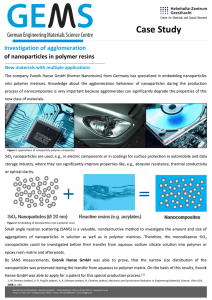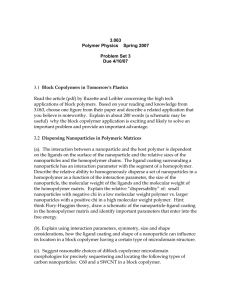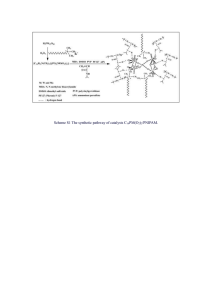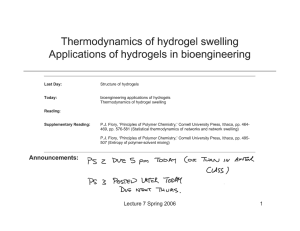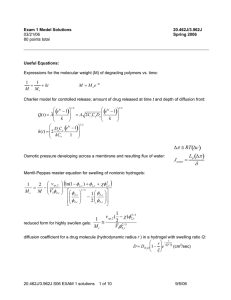Novel Polymer Gel Nanoparticle Dispersions Zhibing Hu
advertisement
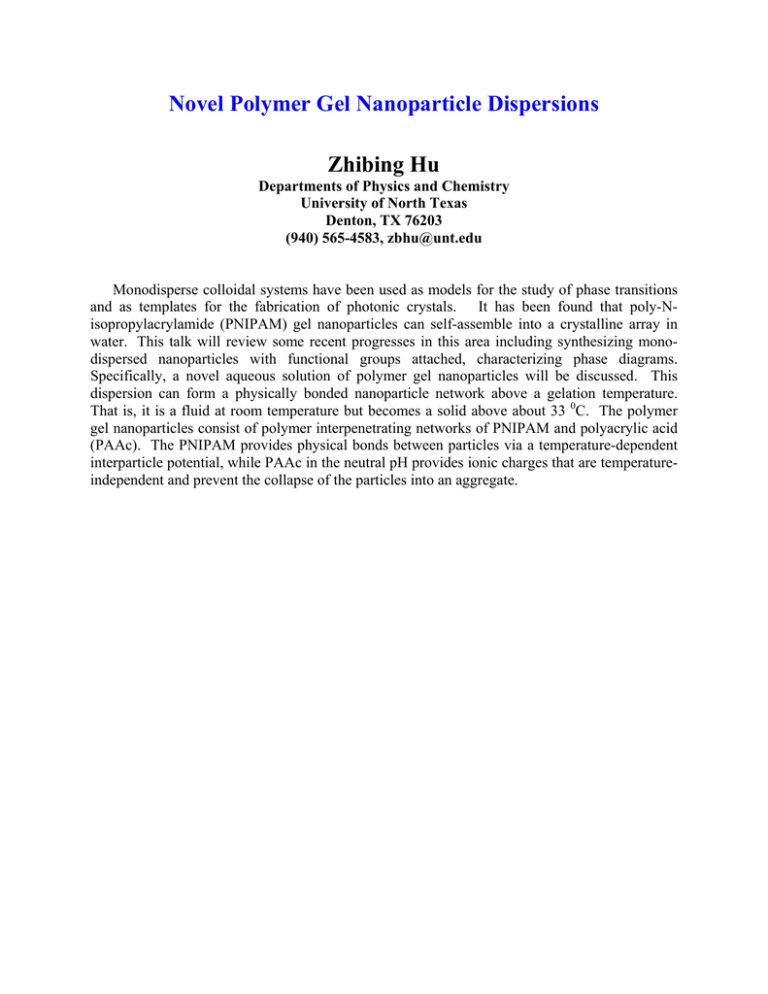
Novel Polymer Gel Nanoparticle Dispersions Zhibing Hu Departments of Physics and Chemistry University of North Texas Denton, TX 76203 (940) 565-4583, zbhu@unt.edu Monodisperse colloidal systems have been used as models for the study of phase transitions and as templates for the fabrication of photonic crystals. It has been found that poly-Nisopropylacrylamide (PNIPAM) gel nanoparticles can self-assemble into a crystalline array in water. This talk will review some recent progresses in this area including synthesizing monodispersed nanoparticles with functional groups attached, characterizing phase diagrams. Specifically, a novel aqueous solution of polymer gel nanoparticles will be discussed. This dispersion can form a physically bonded nanoparticle network above a gelation temperature. That is, it is a fluid at room temperature but becomes a solid above about 33 0C. The polymer gel nanoparticles consist of polymer interpenetrating networks of PNIPAM and polyacrylic acid (PAAc). The PNIPAM provides physical bonds between particles via a temperature-dependent interparticle potential, while PAAc in the neutral pH provides ionic charges that are temperatureindependent and prevent the collapse of the particles into an aggregate.


